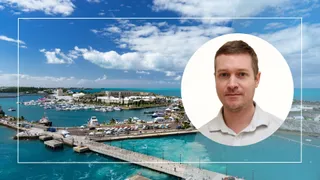
Cracking the liquidity code: the next frontier for non-cat ILS
When it comes to the next leap in the insurance-linked securities (ILS) market, liquidity will be key for unlocking growth. The success of property-catastrophe bonds has shown what’s possible—but as investors and cedants increasingly explore casualty and specialty lines, the challenge of long-duration risk looms large.
Kier James (pictured), chief underwriting officer at MultiStrat, believes change is on the horizon. Speaking exclusively to Bermuda:Re+ILS, ahead of Convergence 2025, taking place 13-15 October, he said: “In the nearer term, an increased number of exit solutions for investors is required. These have started to emerge but are often on a deal-by-deal basis as opposed to entire portfolios.”
This lack of scale has constrained liquidity, but it’s not for lack of interest. As non-cat ILS matures, more business is now available to support the development of new structures. “Legacy markets have now started to offer exit solutions, which is a very welcome development,” James noted. “As the non-cat ILS market has expanded, there is now enough business available to feed these which should drive the evolution of new products.”
Sidecars have helped bridge some of the gap, allowing rated reinsurers and investors to share risk while improving capital efficiency. Yet, as James points out, these structures come with limits — they’re often narrowly defined and difficult to tailor. True liquidity, he argues, will come only when the market embraces securitisation.
“In the longer term, securitisation and exchange trading is going to be key,” he said. “Before this can happen though, a lot of hard work is needed in both building the required infrastructure and also standardising the product.”
Bermuda, as the global epicentre of ILS innovation, is naturally positioned to lead that effort. The island’s regulatory agility, long-standing expertise in risk transfer, and proximity to capital markets make it a prime laboratory for testing these new mechanisms. But there are hurdles ahead.
“Presently, a lot of the contractual wordings are bespoke, cashflows are less consistent than they ought to be due to structural inefficiencies in current processes, and there is a lack of independent modelling and valuation services available,” James says. These inconsistencies, he added, “make it difficult to create a standardised, investable asset class suitable for exchange trading.”
For James, the roadmap to liquidity involves a full ecosystem — “to make this a reality requires an entire ecosystem of originators, banks, brokers, regulators, valuation agents, rating agencies, trustees and investors.” All will need to work together to develop common standards and a transparent platform for pricing and trading.
The model already exists in catastrophe bonds, but even there, secondary trading volumes remain thin. “Catastrophe bonds have led the way,” James conceded, “but there are still only relatively low volumes of secondary trading of many of these, and liquidity can still pose a challenge when loss events do occur.”
The evolution of casualty and specialty ILS may therefore take years, not months — but James is confident it will happen. “We are under no illusions as to how challenging this process will be,” he said, “but we believe this is where the sector is ultimately heading.”
For Bermuda, that evolution could mark the start of another growth cycle. As global investors search for yield and diversification, a liquid, transparent market for long-tail ILS could once again put the island at the centre of reinsurance innovation — just as cat bonds did two decades ago.
Did you get value from this story? Sign up to our free daily newsletters and get stories like this sent straight to your inbox.

